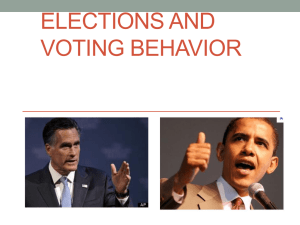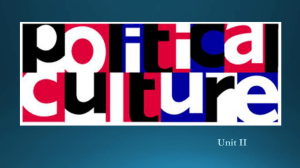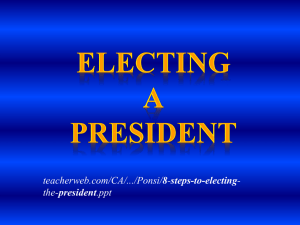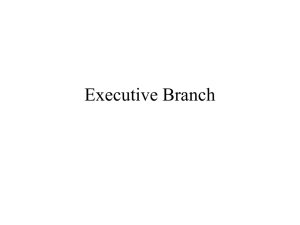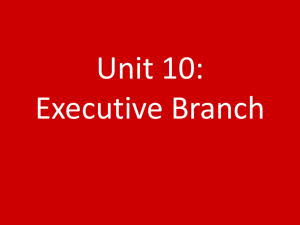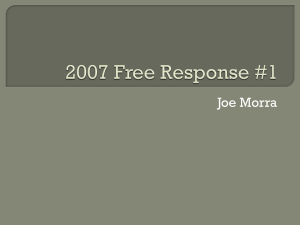“winner take all” electoral college cons
advertisement
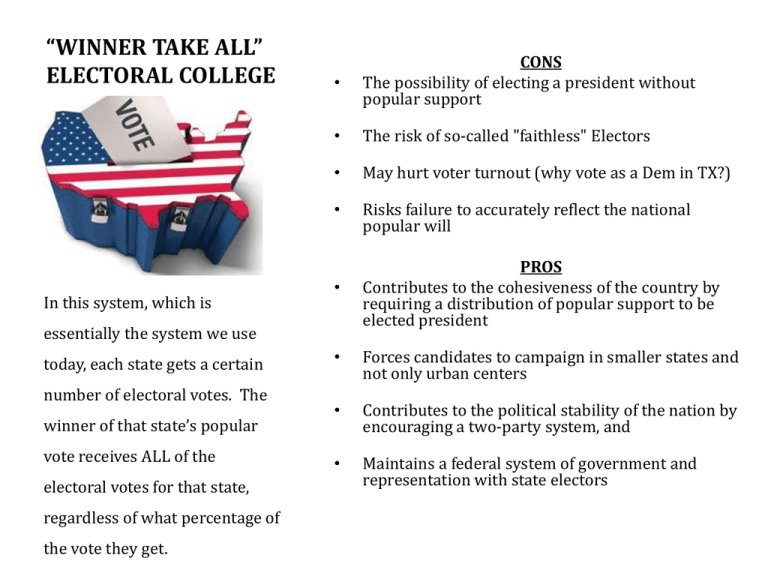
“WINNER TAKE ALL” ELECTORAL COLLEGE In this system, which is • CONS The possibility of electing a president without popular support • The risk of so-called "faithless" Electors • May hurt voter turnout (why vote as a Dem in TX?) • Risks failure to accurately reflect the national popular will • PROS Contributes to the cohesiveness of the country by requiring a distribution of popular support to be elected president • Forces candidates to campaign in smaller states and not only urban centers • Contributes to the political stability of the nation by encouraging a two-party system, and • Maintains a federal system of government and representation with state electors essentially the system we use today, each state gets a certain number of electoral votes. The winner of that state’s popular vote receives ALL of the electoral votes for that state, regardless of what percentage of the vote they get. POPULAR VOTE In this system, the winner of the • CONS Requires a Constitutional Amendment to remove the electoral college • Focus shifts to urban areas and large populations (Who is going to campaign in rural Montana? • May hurt voter turnout (why vote when it is 1 of 150 million—it won’t matter) • Questions on how to declare a winner (Do you need over 50% of Americans to support? Do we use a Instant Runoff system where you rank the candidates?) • May hurt 3rd Party Candidates • PROS Contributes to the cohesiveness of the country by giving each vote the exact same weight as another • May help voter turnout by eliminating the electoral votes • Eliminates the concern that faithless electors can impact the election • Would accurately portray will of the people in the US by ensuring that the winner was the candidate wanted by most Americans election would simply be the candidate that receives the most votes. There are multiple views on how to implement this system and whether a candidate must receive 50% of the vote or higher to win, but the main idea is the person with the most votes will win the election. PROPORTIONAL ALLOCATION In this system, the electoral college system would remain. However, the winner-take-all • CONS The possibility of electing a president without popular support • The risk of so-called "faithless" Electors (Can we figure out what 12 vote for one candidate and what 8 vote for another) • Questions remain about what to do with votes that do not break evenly (i.e. 55% to 45% in a state with 10 electoral votes or 51% to 49% in state with 4 EC Votes) • Risks failure to accurately reflect the national popular will and does not stop state inequality in EC • Risks candidates focusing on states with big populations (why go to MT where you would get at most 2 of the 3 votes when you can aim for 30 in CA?) system would be abolished for a • PROS Encourages voter turnout by knowing that your vote can impact the election (Dems in TX and Reps in CA will try to get as many votes as possible) • May force candidates to campaign in smaller states and not only urban centers by keeping EC in place has 20 EC Votes), you would get • Eliminates the winner take all system 60% of the electoral votes (12). • Maintains a federal system of government and representation with state electors • Forces candidates to campaign in rural areas of major states and not just cities model that gave proportional votes based off of the statewide votes. For example, if you were to get 60% of the votes in PA (which This would ensure that electoral ballots were representative of the population within the state. CONGRESSIONAL DISTRICT METHOD • CONS The possibility of electing a president without popular support and does not solve inequality of state representation • The risk of so-called "faithless" Electors still exists • Incentivizes politicians to draw Congressional districts to help their political parties • Risks failure to accurately reflect the national popular will • Risks campaigns will narrow focus to only swing districts and avoid the rest of the country • PROS Contributes to the cohesiveness of the country by requiring a distribution of popular support to be elected president nationally. In this system, the • Forces candidates to campaign in many areas of the US winner of each Congressional • Helps voter turnout and vote becomes localized (my vote would really count when it is only the people of my home area) • Maintains a federal system of government and representation with state electors • Has worked successfully in Maine and Nebraska In this system, the Electoral College would remain in place. However, the winner-take-all system would be eliminated and the model of Maine and Nebraska would be adopted District would get 1 electoral vote, while the state popular vote winner would get 2 electoral votes. NATIONAL BONUS • CONS Does not solve issue of person with less votes winning election (though it does make it far less likely • Does not help a third party candidate emerge • Does not fully address the inequality between the states in terms of electoral power • Does not address faithless elector problem • PROS Keeps the current system in place, but helps ensure the popular vote winner has a better chance at winning • Would encourage voter turnout (Republican in CA may make difference in national popular vote) • Forces campaigns to appeal to the masses for the 102 point bonus (Campaign across country—not just swing states) • Maintains a federal system of government and representation with state electors This system would keep the current Electoral College votes in place, but would give the national popular vote winner an additional 102 electoral votes (2 from each state). This would make the EC have a total of 640 votes and it would take 321 votes to win.

